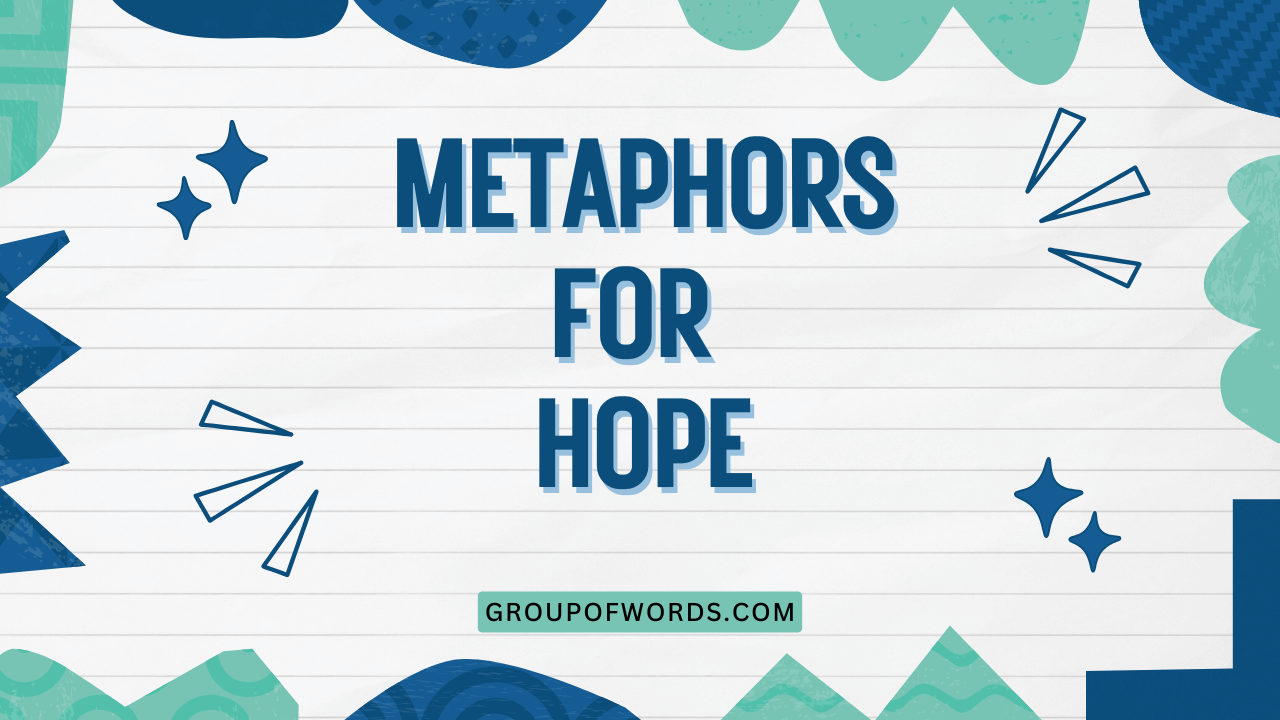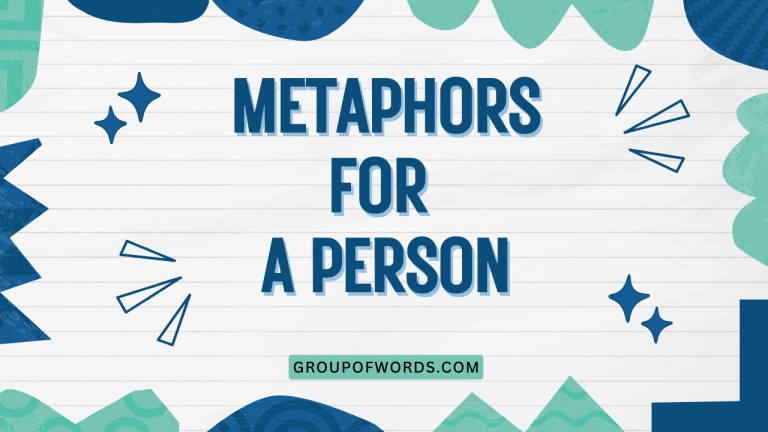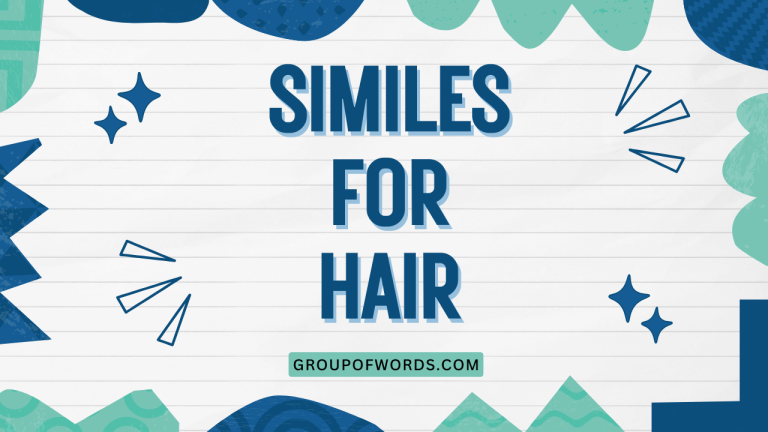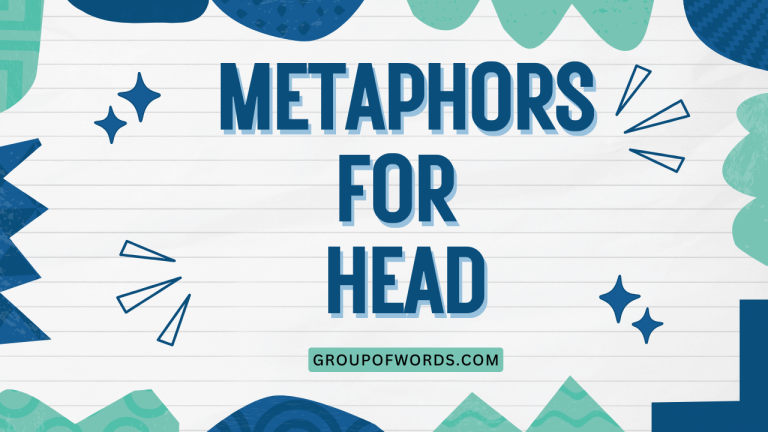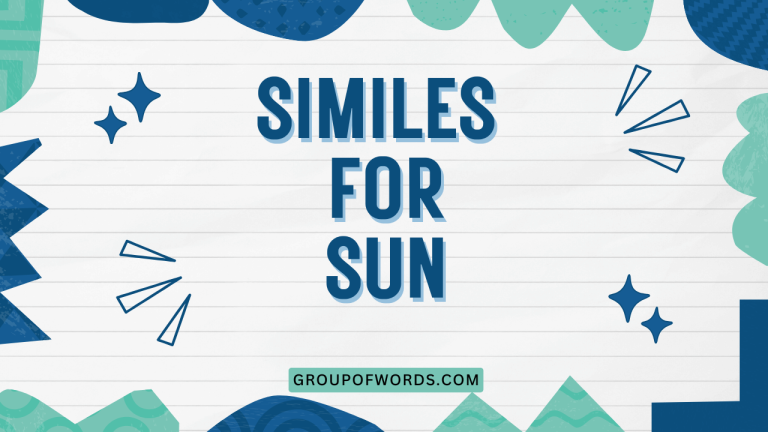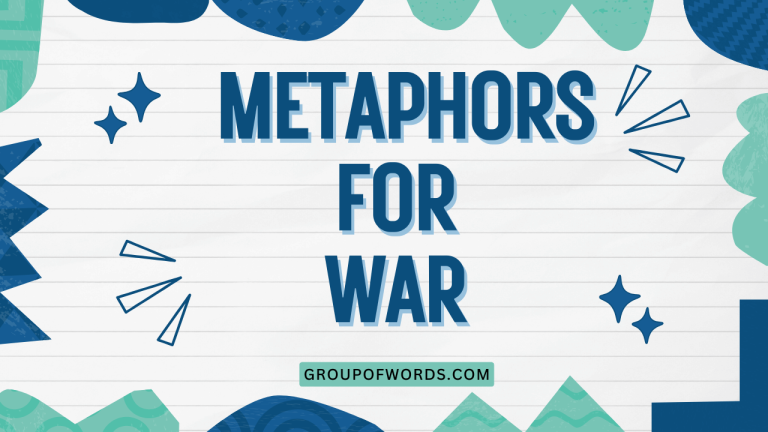Metaphors for Hope: A Comprehensive Guide
Hope is a fundamental human emotion, a beacon that guides us through adversity. Because it’s an abstract concept, we often use metaphors to express and understand it.
Mastering metaphors for hope enhances your English proficiency, allowing you to communicate with greater nuance and emotional depth. This article explores various metaphors for hope, providing clear definitions, examples, usage rules, and practice exercises.
This guide is beneficial for English language learners, writers, and anyone interested in enriching their understanding and use of figurative language.
Whether you’re preparing for an English exam, crafting a compelling narrative, or simply seeking to express your feelings more eloquently, this comprehensive guide will equip you with the knowledge and tools to effectively use metaphors for hope.
Table of Contents
- Introduction
- Definition of Metaphor and Hope
- What is a Metaphor?
- What is Hope?
- Structural Breakdown of Hope Metaphors
- Types of Metaphors for Hope
- Light Metaphors
- Seed Metaphors
- Journey Metaphors
- Weather Metaphors
- Music Metaphors
- Examples of Metaphors for Hope
- Light Metaphor Examples
- Seed Metaphor Examples
- Journey Metaphor Examples
- Weather Metaphor Examples
- Music Metaphor Examples
- Usage Rules for Metaphors of Hope
- Contextual Appropriateness
- Avoiding Clichés
- Maintaining Consistency
- Common Mistakes with Hope Metaphors
- Practice Exercises
- Advanced Topics in Hope Metaphors
- Extended Metaphors of Hope
- Avoiding Mixed Metaphors
- Subtle and Implied Metaphors
- Frequently Asked Questions
- Conclusion
Definition of Metaphor and Hope
To understand metaphors for hope, it’s essential to define both “metaphor” and “hope” clearly. A metaphor is a figure of speech, and hope is a deeply human emotion.
What is a Metaphor?
A metaphor is a figure of speech that directly compares two unrelated things, asserting that one thing is another. Unlike similes, which use “like” or “as” to make comparisons, metaphors create a direct association to highlight shared qualities or create a vivid image. Metaphors are powerful tools for conveying complex ideas, evoking emotions, and adding depth to language. They enrich writing and speech by enabling us to see familiar things in new and imaginative ways.
For example, saying “He is a lion in battle” is a metaphor. It doesn’t mean he is literally a lion, but it suggests he possesses the qualities of a lion, such as courage and strength.
Understanding metaphors is crucial for interpreting literature, poetry, and everyday communication.
What is Hope?
Hope is an optimistic state of mind based on an expectation of positive outcomes with respect to events and circumstances in one’s life or the world at large. It involves a belief that a future outcome, even if uncertain, can be desirable. Hope is often associated with perseverance, resilience, and the ability to cope with challenges. It’s a powerful motivator that drives individuals to pursue goals and overcome obstacles. Hope can be directed towards personal aspirations, relationships, or broader societal changes.
Hope is not simply wishful thinking; it often involves a degree of agency and a belief in one’s ability to influence the future. It’s a vital component of psychological well-being, providing a sense of purpose and meaning, especially during difficult times.
Without hope, individuals may experience despair and a lack of motivation.
Structural Breakdown of Hope Metaphors
Metaphors for hope typically involve two key elements: the tenor and the vehicle. The tenor is the subject being described (in this case, hope), and the vehicle is the object or concept used to represent it. The effectiveness of a metaphor depends on the connection between the tenor and the vehicle.
For example, in the metaphor “Hope is a beacon,” the tenor is “hope,” and the vehicle is “beacon.” The connection lies in the shared quality of providing guidance and light in darkness. The structure can be summarized as: Hope (Tenor) IS a Beacon (Vehicle).
Understanding this structure helps in both interpreting and creating effective metaphors.
A successful metaphor resonates because it highlights specific qualities of hope, such as its ability to guide, nurture, or inspire. The chosen vehicle should evoke positive associations and reinforce the desired message about hope.
The strength of the connection between the tenor and vehicle determines the metaphor’s impact and clarity.
Types of Metaphors for Hope
Metaphors for hope can be categorized based on the specific imagery and concepts they employ. Here are some common types:
Light Metaphors
Light metaphors associate hope with illumination, clarity, and guidance. They often use imagery of light overcoming darkness, symbolizing the power of hope to dispel despair.
Examples include “a ray of hope,” “a beacon in the darkness,” and “the dawn of a new era.” These metaphors are universally understood and evoke a sense of optimism and possibility. Light metaphors often suggest that hope can reveal a path forward, even in the most challenging circumstances.
Seed Metaphors
Seed metaphors represent hope as something that grows and develops over time. They use imagery of seeds, plants, and growth to symbolize the potential for hope to flourish.
Examples include “a seed of hope,” “nurturing hope,” and “the blossoming of dreams.” These metaphors emphasize the importance of patience, care, and perseverance in fostering hope. Seed metaphors suggest that even small beginnings can lead to significant outcomes.
Journey Metaphors
Journey metaphors portray hope as a path or voyage towards a desired destination. They use imagery of roads, maps, and travel to symbolize the challenges and rewards of pursuing hope.
Examples include “a journey of hope,” “navigating towards hope,” and “a light at the end of the tunnel.” These metaphors highlight the importance of resilience, determination, and a clear vision in maintaining hope. Journey metaphors often acknowledge that the path to hope may be difficult, but the destination is worth the effort.
Weather Metaphors
Weather metaphors use elements of weather to describe hope. “A calm after the storm” suggests hope as a peaceful resolution following hardship.
“The sun breaking through the clouds” illustrates hope emerging from difficult times. These metaphors connect hope to natural cycles, suggesting renewal and change.
They emphasize the transient nature of challenges and the potential for positive transformations. Weather metaphors can also symbolize the strength and resilience needed to weather difficult periods.
Music Metaphors
Music metaphors relate hope to harmonies, melodies, and rhythms. “A song of hope” symbolizes a message of optimism and inspiration.
“A harmonious future” suggests a state of peaceful and positive outcomes. These metaphors highlight the emotional and uplifting qualities of hope.
Music metaphors often evoke a sense of unity, harmony, and the power of collective aspirations. They can also represent the resilience and perseverance needed to maintain hope in the face of adversity.
Examples of Metaphors for Hope
The following tables provide extensive examples of metaphors for hope, categorized by type.
Light Metaphor Examples
Light metaphors are powerful ways to convey the idea of hope illuminating a path forward. The following table provides several examples of light metaphors used to describe hope.
| Metaphor | Explanation |
|---|---|
| A ray of hope | A small but significant indication of a positive outcome. |
| A beacon in the darkness | A source of guidance and reassurance during difficult times. |
| The dawn of a new era | The beginning of a promising and positive period. |
| A glimmer of hope | A faint but encouraging sign. |
| A spark of hope | A small but potentially powerful feeling or idea. |
| The light at the end of the tunnel | A sign of eventual success after a long and challenging period. |
| A guiding light | Something that provides direction and support. |
| Illuminating the path forward | Making the way ahead clearer and more hopeful. |
| A sunbeam of optimism | A bright and cheerful outlook. |
| Chasing away the shadows | Overcoming negativity and despair. |
| A lighthouse in the storm | A reliable source of guidance and safety. |
| The candle of hope | A fragile but precious source of optimism. |
| A bright future | A promising and positive outlook. |
| A shining example | A role model who inspires hope and achievement. |
| The stars of hope | Distant but inspiring goals and aspirations. |
| A lantern in the night | A source of comfort and direction in times of uncertainty. |
| The glow of possibility | A sense of potential and opportunity. |
| A flare of optimism | A sudden burst of positive feeling. |
| The brilliance of potential | The inherent promise and talent within someone or something. |
| A torch of inspiration | Something that ignites passion and motivation. |
| The sun rising on a new day | A fresh start and renewed hope. |
| A spotlight on success | Highlighting achievements and positive outcomes. |
| The radiance of dreams | The beauty and allure of aspirations. |
| A beam of encouragement | Providing support and motivation to others. |
| The aurora of possibility | A vibrant display of potential outcomes. |
Seed Metaphor Examples
Seed metaphors emphasize the idea of hope as something that starts small but has the potential to grow. The following table provides examples of seed metaphors used to describe hope.
| Metaphor | Explanation |
|---|---|
| A seed of hope | A small but significant beginning. |
| Nurturing hope | Carefully fostering and supporting a positive outlook. |
| The blossoming of dreams | The realization and growth of aspirations. |
| Planting seeds of optimism | Instilling a positive attitude in oneself or others. |
| The roots of resilience | The underlying strength that allows one to overcome challenges. |
| A garden of possibilities | A space where opportunities can flourish. |
| The sprout of a new beginning | The initial stage of a fresh start. |
| Cultivating hope | Actively working to develop and maintain a positive outlook. |
| The fertile ground of opportunity | A situation where success is likely. |
| The harvest of success | The positive outcomes resulting from hard work and perseverance. |
| A budding aspiration | A newly formed and developing goal. |
| The tree of hope | A strong and enduring source of optimism. |
| Watering the seeds of change | Supporting and encouraging positive transformations. |
| The fruits of labor | The rewards gained through effort and dedication. |
| A growing sense of optimism | An increasing positive outlook. |
| The soil of perseverance | The foundation for enduring through challenges. |
| A blossoming opportunity | An unfolding chance for success. |
| The branches of possibility | The diverse paths and options available. |
| A flourishing future | A prosperous and thriving outlook. |
| The petals of potential | The delicate and promising aspects of a situation. |
| The vine of progress | The continuous growth and advancement towards a goal. |
| A thriving ambition | A strong and successful drive to achieve. |
| The leaves of inspiration | The motivating and uplifting aspects of a situation. |
| A seeded intention | A deliberate and purposeful planting of hope. |
| The evergreen of resilience | The enduring and unwavering ability to bounce back. |
Journey Metaphor Examples
Journey metaphors portray hope as a path or voyage towards a desired destination. They highlight the challenges and rewards of pursuing hope, emphasizing the importance of resilience and determination.
The following table provides several examples of journey metaphors used to describe hope.
| Metaphor | Explanation |
|---|---|
| A journey of hope | A long and challenging path towards a positive outcome. |
| Navigating towards hope | Steering through difficulties to reach a desired destination. |
| A light at the end of the tunnel | A sign of eventual success after a long and challenging period. |
| On the road to recovery | Making progress towards healing and restoration. |
| Charting a course for a better future | Planning and working towards a positive outcome. |
| A path to success | A route that leads to achievement and fulfillment. |
| Climbing the mountain of challenges | Overcoming obstacles to reach a goal. |
| Sailing towards a brighter horizon | Moving forward with optimism and anticipation. |
| Crossing the bridge to a new beginning | Transitioning to a fresh start. |
| Walking the road of perseverance | Enduring through difficulties with determination. |
| A map to a better tomorrow | A plan for achieving a positive future. |
| Hiking towards a hopeful summit | Striving to reach a peak of success and fulfillment. |
| A voyage of discovery | Exploring new possibilities and opportunities. |
| Traversing the landscape of challenges | Navigating through difficult circumstances. |
| Reaching the destination of dreams | Achieving long-held aspirations. |
| A trail of optimism | A path marked by a positive outlook. |
| Moving forward with unwavering resolve | Continuing despite obstacles with strong determination. |
| The compass of conviction | A guiding principle that provides direction and purpose. |
| The open road of opportunity | A pathway filled with potential and possibilities. |
| A strategic route to success | A well-planned and thoughtful approach to achieving goals. |
| The staircase of ambition | Each step representing progress towards a higher goal. |
| The gateway to a brighter future | An entrance or opportunity leading to positive outcomes. |
| The journey towards enlightenment | A path of learning and self-discovery leading to greater understanding. |
| The trek through trials | A challenging journey through difficult experiences. |
| The pilgrimage of progress | A dedicated journey towards improvement and advancement. |
Weather Metaphor Examples
Weather metaphors use elements of weather to describe hope, connecting it to natural cycles of renewal and change. The following table provides examples of weather metaphors used to describe hope.
| Metaphor | Explanation |
|---|---|
| A calm after the storm | Peaceful resolution following hardship. |
| The sun breaking through the clouds | Hope emerging from difficult times. |
| A rainbow after the rain | A symbol of promise and positivity after challenges. |
| The clearing skies of optimism | A brightening outlook and positive perspective. |
| A gentle breeze of encouragement | A subtle but uplifting support. |
| Riding out the storm with hope | Enduring difficulties with optimism. |
| The warmth of a sunny disposition | A cheerful and positive attitude. |
| A refreshing rain of new beginnings | A revitalizing start after a period of stagnation. |
| The dawn of a brighter day | The beginning of a more positive period. |
| Weathering the challenges with resilience | Enduring hardships with strength and determination. |
| The fog lifting to reveal clarity | Gaining understanding and insight after confusion. |
| A sunny outlook on life | A consistently positive perspective. |
| The tide turning in favor | A change in circumstances leading to a positive outcome. |
| A gentle shower of blessings | A series of positive events and opportunities. |
| The winds of change bringing hope | Transformations leading to a more positive future. |
| A clear sky of opportunity | A situation filled with potential and possibilities. |
| The storm clouds parting to reveal sunshine | Difficulties resolving to reveal positive outcomes. |
| A refreshing downpour of inspiration | A sudden burst of motivation and creativity. |
| The calm before the breakthrough | A peaceful period preceding a significant positive event. |
| A light drizzle of optimism | A subtle but persistent positive outlook. |
| The hurricane of hardship subsiding | Difficult and challenging times coming to an end. |
| A balmy climate of encouragement | A supportive and uplifting environment. |
| The sun’s rays of possibility | Opportunities and potential becoming visible. |
| A clear forecast for the future | A positive and promising outlook. |
| The snow melting to reveal new life | Challenges resolving to allow for growth and renewal. |
Music Metaphor Examples
Music metaphors relate hope to harmonies, melodies, and rhythms, highlighting the emotional and uplifting qualities of hope. The following table provides examples of music metaphors used to describe hope.
| Metaphor | Explanation |
|---|---|
| A song of hope | A message of optimism and inspiration. |
| A harmonious future | A state of peaceful and positive outcomes. |
| The rhythm of resilience | The consistent ability to bounce back from adversity. |
| The melody of perseverance | The enduring effort to achieve a goal. |
| A symphony of success | A grand and harmonious achievement. |
| The harmony of unity | A state of agreement and cooperation. |
| A crescendo of optimism | A gradually increasing positive outlook. |
| The sweet music of dreams coming true | The delightful realization of aspirations. |
| A chorus of encouragement | A collective voice of support and motivation. |
| The tempo of progress | The pace at which advancements are made. |
| The gentle tune of reassurance | A comforting and calming message. |
| A vibrant note of inspiration | A strong and uplifting stimulus. |
| The composition of a better life | Creating and structuring a more positive existence. |
| A harmonious blend of possibilities | A combination of favorable opportunities. |
| The upbeat melody of success | A cheerful and positive achievement. |
| A lyrical narrative of hope | A beautifully expressed story of optimism. |
| The rhythmic pulse of determination | The consistent drive to achieve a goal. |
| A melodic journey of progress | A harmonious path of advancement. |
| The resonant chords of unity | Strong and harmonious agreement among people. |
| A harmonious refrain of encouragement | A repeated and uplifting message of support. |
| The symphony of collaboration | A harmonious and successful joint effort. |
| A melodic echo of perseverance | A persistent and harmonious reminder of determination. |
| The ballad of belief | A heartfelt story of faith and trust. |
| A harmonious movement towards resolution | A peaceful and coordinated progression towards a solution. |
| The musicality of motivation | The inspiring and uplifting aspects of drive and ambition. |
Usage Rules for Metaphors of Hope
Using metaphors effectively requires attention to several key rules. These rules ensure clarity, appropriateness, and impact.
Contextual Appropriateness
The metaphor should be appropriate for the context and audience. Consider the tone of the writing or speech and choose metaphors that align with it.
A lighthearted metaphor might be suitable for an informal setting, while a more serious metaphor may be necessary for a formal context. Understanding your audience and their background is crucial for selecting metaphors that will resonate effectively.
For example, using a complex or obscure metaphor in a conversation with someone unfamiliar with the topic could lead to confusion. Similarly, a very casual metaphor might be inappropriate in a formal presentation.
Always consider the setting, the audience, and the overall message you’re trying to convey.
Avoiding Clichés
Avoid overused or clichéd metaphors, such as “a light at the end of the tunnel” (although it’s listed as an example above, use it sparingly). While these metaphors are easily understood, they lack originality and impact.
Strive to create fresh and imaginative metaphors that capture the essence of hope in a unique way. Original metaphors make your writing or speech more engaging and memorable.
Instead of relying on clichés, try to think of specific details or images that relate to hope in a novel way. For example, instead of “a light at the end of the tunnel,” you might say “hope is the engineer carefully laying the tracks to guide us out.” The more specific and imaginative your metaphor, the more impact it will have.
Maintaining Consistency
Maintain consistency in your metaphors. Avoid mixing metaphors that create confusing or contradictory images.
Once you establish a metaphor, stick with it throughout the passage or speech. Inconsistent metaphors can undermine your message and confuse your audience.
For example, if you start by describing hope as a seed, avoid switching to a journey metaphor mid-sentence. Instead, continue with the imagery of growth and nurturing.
Maintaining consistency ensures that your metaphor remains clear and effective.
Common Mistakes with Hope Metaphors
Using metaphors incorrectly can lead to confusion and weaken your message. Here are some common mistakes to avoid:
| Mistake | Incorrect Example | Correct Example |
|---|---|---|
| Mixing metaphors | “Hope is a seed that sails towards a brighter horizon.” | “Hope is a seed that blossoms into a beautiful flower.” |
| Using clichés | “Hope is a light at the end of the tunnel.” | “Hope is the steady flame of a candle in a dark room.” |
| Inappropriate tone | (In a somber eulogy) “Hope is a party waiting to happen.” | (In a somber eulogy) “Hope is the quiet strength that endures.” |
| Overly complex metaphors | “Hope is the quantum entanglement of two souls seeking resonance in the multiverse.” | “Hope is the invisible thread connecting us to a brighter future.” |
Practice Exercises
Test your understanding of metaphors for hope with these exercises.
| Question | Answer |
|---|---|
| 1. Which of the following is a seed metaphor for hope? a) a ray of hope b) a seed of hope c) a journey of hope |
b) a seed of hope |
| 2. Which of the following is a light metaphor for hope? a) the blossoming of dreams b) a guiding light c) navigating towards hope |
b) a guiding light |
| 3. Which of the following is a journey metaphor for hope? a) a calm after the storm b) a harmonious future c) a path to success |
c) a path to success |
| 4. Which of the following is a weather metaphor for hope? a) the sun breaking through the clouds b) nurturing hope c) a spark of hope |
a) the sun breaking through the clouds |
| 5. Which of the following is a music metaphor for hope? a) a ray of hope b) a song of hope c) a journey of hope |
b) a song of hope |
| 6. Rewrite the following sentence using a light metaphor: “Hope is helping us find our way.” | “Hope is a beacon guiding us through the darkness.” |
| 7. Rewrite the following sentence using a seed metaphor: “Hope is starting to grow.” | “A seed of hope is beginning to sprout.” |
| 8. Rewrite the following sentence using a journey metaphor: “Hope is leading us to a better place.” | “Hope is our compass, navigating us towards a brighter future.” |
| 9. Rewrite the following sentence using a weather metaphor: “Hope is arriving after a difficult time.” | “The calm of hope is arriving after the storm.” |
| 10. Rewrite the following sentence using a music metaphor: “Hope is making everything feel more harmonious.” | “Hope is composing a more harmonious future.” |
Advanced Topics in Hope Metaphors
For advanced learners, exploring extended, mixed, and subtle metaphors can further enhance your understanding and usage.
Extended Metaphors of Hope
An extended metaphor is a metaphor that is developed over several lines or throughout an entire piece of writing. It allows for a more detailed and nuanced exploration of the comparison.
For example, instead of simply saying “Hope is a seed,” you could create an extended metaphor that describes the planting, nurturing, and eventual blossoming of that seed.
Example: “Hope is a seed, carefully planted in the fertile soil of our hearts. We water it with perseverance, nourish it with belief, and protect it from the harsh winds of doubt.
As the days turn into weeks, the seed begins to sprout, sending forth tender shoots that reach towards the sunlight. With each passing season, it grows stronger, its roots deepening, its branches extending, until finally, it blossoms into a magnificent tree, bearing the fruits of our dreams.”
Avoiding Mixed Metaphors
A mixed metaphor combines two or more incompatible metaphors, resulting in a confusing and often humorous image. Avoiding mixed metaphors is crucial for clear and effective communication.
Always ensure that the elements of your metaphor are consistent and logically connected.
Incorrect Example: “Hope is a seed that sails towards a brighter horizon, climbing the ladder of success.” This sentence mixes the seed metaphor with a journey and climbing metaphor, creating a confusing image.
Correct Example: “Hope is a seed that, with careful nurturing, will climb toward the sunlight and blossom into a beautiful flower.” This maintains consistency within the seed metaphor.
Subtle and Implied Metaphors
Subtle metaphors are not explicitly stated but are implied through careful word choice and imagery. These metaphors can add depth and nuance to your writing without being overly obvious.
Implied metaphors require the reader to make the connection between the tenor and the vehicle.
Example: Instead of saying “Hope illuminated her face,” you could say “A soft glow touched her features.” This implies that hope is the source of the glow, creating a subtle and evocative image.
Frequently Asked Questions
Here are some frequently asked questions about metaphors for hope:
- What is the difference between a metaphor and a simile?
A metaphor directly compares two unlike things, stating that one thing *is* another (“Hope is a beacon”). A simile compares two things using “like” or “as” (“Hope is like a beacon”).
- Why use metaphors for hope?
Metaphors make abstract concepts like hope more concrete and relatable. They add emotional depth and create vivid images in the reader’s mind.
- How can I avoid using clichés when writing about hope?
Think of original and specific images that represent hope in a unique way. Consider personal experiences or observations that can inspire fresh metaphors.
- What should I do if I accidentally mix metaphors?
Review your writing carefully and identify the conflicting images. Revise the sentence or passage to maintain consistency and clarity within your metaphors.
- How can I improve my ability to understand metaphors?
Read widely and pay attention to how authors use figurative language. Practice identifying the tenor and vehicle in different metaphors and consider the connections between them.
- Is it okay to use multiple metaphors in one piece of writing?
Yes, but maintain consistency within each metaphor. Avoid mixing them in a way that creates confusion.
- What role does culture play in understanding metaphors for hope?
Cultural background significantly influences the interpretation of metaphors. Certain symbols or images may have different meanings in different cultures. Be mindful of your audience and choose metaphors that are culturally appropriate and universally understandable.
- How do extended metaphors enhance the impact of hope in literature?
Extended metaphors allow writers to explore different nuances and facets of hope, creating a deeper emotional resonance in the reader. They provide a rich tapestry of imagery that builds a more compelling and memorable depiction of hope.
Conclusion
Understanding and using metaphors for hope is a valuable skill for English language learners and writers alike. By mastering the different types of metaphors, avoiding common mistakes, and practicing regularly, you can enhance your ability to communicate effectively and express complex emotions with greater nuance and impact.
Remember to choose metaphors that are appropriate for the context, avoid clichés, and maintain consistency in your imagery.
Hope is a powerful emotion, and metaphors provide a powerful tool for conveying its essence. Continue to explore and experiment with different metaphors to find the ones that best resonate with you and your audience.
With practice and attention to detail, you can use metaphors to create memorable and moving expressions of hope.
